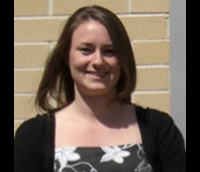3 Dec 2010
Sophie Beckett joined SCI in 2007. She is an inorganic research chemist, specialising in X-ray diffraction and the analysis of bone, biological minerals and related materials. Her work has applications in forensic, archaeological and medical science. She is a Research Fellow at Cranfield Forensic Institute, Cranfield University, Shrivenham. She is also involved in the teaching and supervision of Master's Degree students and carries out commercial contract work.
What is the primary focus of your research?
Bone mineral (a biological form of calcium hydroxyapatite). It has many important biological functions. I am interested in understanding its composition and structure and how it varies between species, within species, due to age, sex, diet and also the effect of heating and burial of bone.
Do you share your findings with colleagues in other disciplines?
Bone is an amazing natural composite material and is comprised of both organic and inorganic components. Every human individual and many animals possess a skeleton of bone. An interdisciplinary approach to the study of bone mineral is therefore essential. My work involves interaction with many different people with diverse scientific backgrounds, including the general public. A major challenge is the presentation of my research in such a way that it can be understood by and enthuse individuals from each interdisciplinary group I work with. Of course, achieving this, and the gains from approaching the research with a broad, interdisciplinary perspective are major rewards.

My research has applications in the identification of human bone from fragments recovered in forensic contexts and archaeology. It is also of benefit in the study of other biological minerals such as urinary stones and in the analysis of archaeological objects made from bone materials.
One major application of my work is its relevance to the optimisation of bone substitute materials such as synthetic bone mineral coatings on endoprosthetics (eg hip and knee replacements).
Is this tied to your commercial work at the Forensic Institute?
Yes, my contract work can involve all applications that arise from my research. In particular, forensic casework and the analysis of calcium hydroxyapatite coatings on metal substrates for commercial clients.
What's your next career move?
I have recently become the laboratory manager for Cranfield Forensic Institute's new Analytical Laboratory which is due to open in Spring 2011. It will be a challenge to manage a facility with a diverse analytical capability including inductively coupled plasma - mass spectroscopy, X-ray fluorescence, glass refractive index measurement, Fourier transform infra-red microscopy and micro-computer tomography. It is a challenge that I am thoroughly looking forward to.
